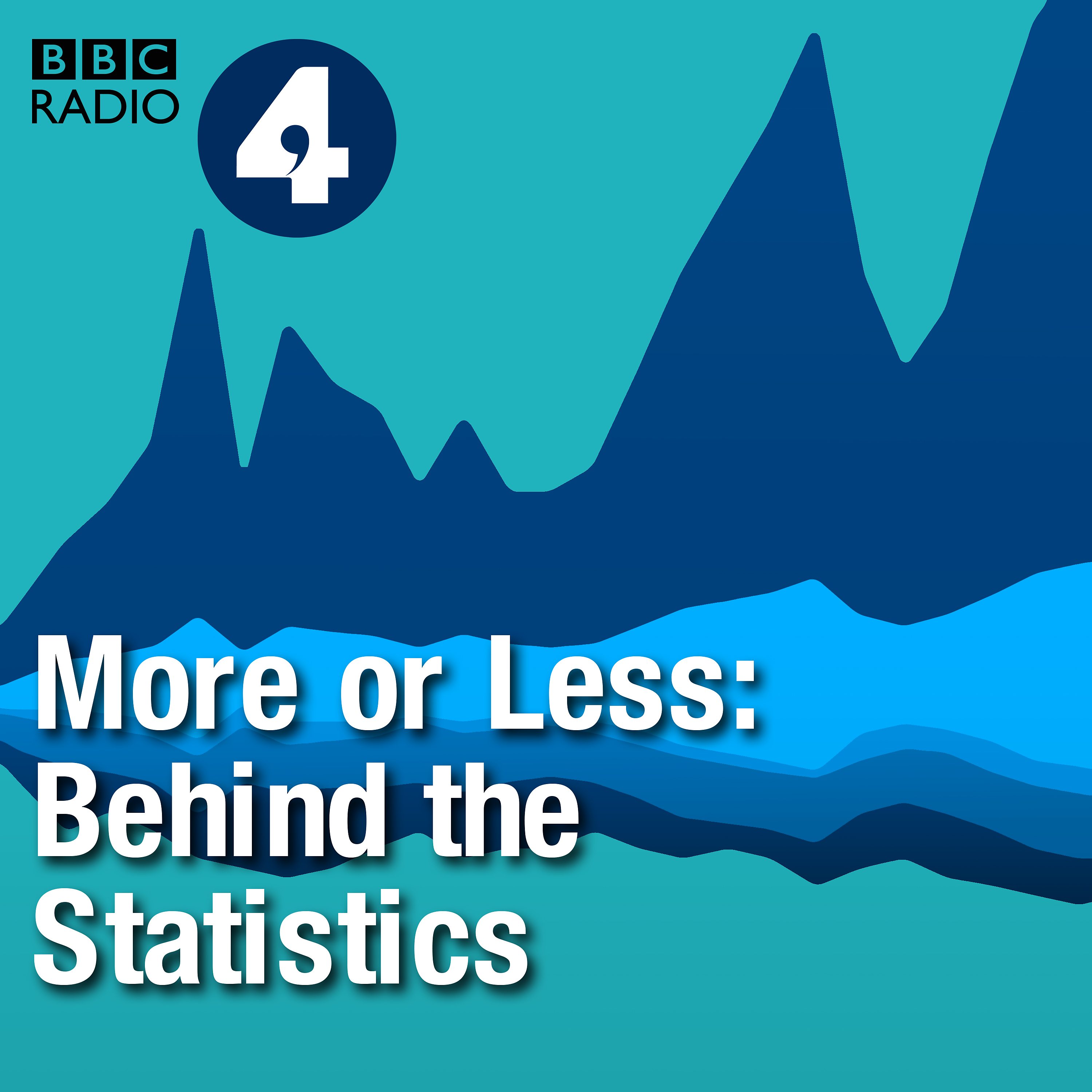
Has Russia suffered a million casualties in the Ukraine war?

More or Less: Behind the Stats
Deep Dive
- Claims of one million Russian casualties are circulating among politicians and journalists.
- Defining 'casualty' (killed vs. wounded) significantly impacts the numbers.
- The Russian military's operational methods may lead to double or triple counting of casualties.
- Estimates vary, with some suggesting between 800,000 and 900,000 casualties based on traditional definitions.
Shownotes Transcript
This BBC podcast is supported by ads outside the UK.
ConstantContact.com
Hello and thanks for downloading the More or Less podcast. We're the program that looks at the numbers in the news and in life. And I'm Tim Harford. The war in Ukraine has been grinding on since Russia's full-scale invasion in 2022, with a huge human toll on both sides. Recently, politicians and journalists have been emphasizing the scale of losses, specifically for Russia.
Here's the UK's Foreign Secretary, David Lammy. Putin's barbaric ambition has caused untold harm on Ukraine and its people. But Putin is stealing Russia's future too. Now a million Russian casualties and counting. The figure of one million casualties has also been tweeted out by the President of Ukraine, Volodymyr Zelenskyy.
But with Russia keeping their casualty numbers secret, how can we be sure about this figure? One of the organisations that has been using the million casualties figure is the Centre for Strategic and International Studies, a Washington-based think tank.
I asked Seth Jones, the president of their defense and security department, whether that number was right. Putting a precise number on casualties in a war that is very difficult to cover at the front lines is hard, but it is very close to what we've been counting in the war, which is somewhere around a million Russian casualties, which is extraordinary. So that sounds...
roughly within the ballpark. And what is the definition of a casualty? I think a lot of people will imagine people who've been killed, but I think there's a different definition in military circles. Right. In military circles, casualties are both dead and wounded. So it's a combination of the two. And how much confidence do you have in your estimate?
I would say, you know, if one ballparks estimates in low confidence, medium confidence and high confidence, with high confidence being they're really a slam dunk, I would say somewhere in the medium that it's within the ballpark. So clearly a margin of error on this claim, which is understandable in the circumstances.
But Seth is also basing his number on other people's estimates. And alongside Western governments, one of Seth's sources is the BBC's Russian service, which has been working on a count of likely Russian war dead.
However, the BBC's Olga Ivshina, who's been part of that project, thinks there might be a question mark over the way the casualty figure is defined, particularly in what the Ukrainian government have been counting. So there is a sort of traditional Western military analysis way of defining military casualties, which includes killed, missing in action and heavily wounded, severely wounded, so those who would never be able to return to the front lines.
Because of how the Russian military operates, this broader definition creates the risk of double or even triple counting.
Very often, those lightly wounded can be sent to the front line again and again, sometimes after they're recovered, sometimes even during their still recovering. And there are numerous instances where people on crutches were sent back to fight. Olga thinks that there's good reason to believe that using the standard definition, the casualty figure could be lower than a million. Well, I think it would be somewhere between 80%.
800 and 900,000, based on the traditional estimates. But if you count lightly wounded, yes, of course, it will be well over 1 million. The bottom line is that any figure for wounded soldiers is open to interpretation. No one's able to actually count the Russian injuries with any precision, and so the number of casualties is always going to be vague.
A less ambiguous number is the figure for the number of Russian soldiers who've died in the war. The number Olga and her team have gone to great lengths to count. So at BBC Russian, I lead the project where we build name by name a list of Russian soldiers killed in action in Ukraine based on open source. So these are names which were 100% proved by Russian sources, by credible Russian sources. So this just sets you a benchmark.
Olga, along with volunteers and with the independent media group MediaZona, sifts through local government records, newspapers and social media posts to find the names and cross-reference them against images from the graves and cemeteries. In our list we have 113,000 names. Of course, we're missing some. And actually the information we're getting from the Russian cemeteries suggests we're missing sort of half.
So it seems the number of Russians killed, not Russians, people fighting for Russia killed in action, because it also includes foreigners, etc., can be close to 250,000 killed only. This number, around 250,000 Russian soldiers killed, is the clearest measure we can find of the scale of Russian losses. And even this is deeply imperfect.
Whichever number is closest to the truth, the basic point is clear. This war has been brutal in terms of the Russian lives lost.
For Seth Jones, a military analyst, that is a predictable result of Russia's strategy. Well, there are probably a couple of different factors contributing to it. The first is the way the Russians fight. They use dismounted infantry, including human wave attacks. Behind the jargon, this means Russian commanders are sending a huge number of Russian soldiers out into the battlefield, exposed to enemy fire. And second is the...
Ukrainian forces. It's their defense in depth. They have used trenches, dragon's teeth, which are these pyramid-like, often concrete barriers that make it very difficult for tanks or other armored personnel carriers, as well as artillery and drones. So it's not just the way the Russians fight offensively.
It's also the way the Ukrainians have fought on the defensive side. It's led to high rates of casualties in and around the front lines for the Russians. While a great deal of attention has been focused on the claim that Russian casualties have passed the landmark of one million, the Ukrainians, of course, have been suffering heavy casualties too. Seth told us that his best estimate is that Ukraine has suffered 400,000 casualties over
and between 60,000 and 100,000 dead. Of course, those estimates will also be subject to a margin of error. In a recent report, Seth worked out the speed of the Russian advances in various battles and compared them to those from wars of the past.
The Russian advances in Kupyansk, for example, over the course of late 2024 and early 2025 in Ukraine were even slower than during the Somme in World War I, averaging about 50 meters per day. The recent Russian advances since January 2024 have been some of the slowest
that we have identified since World War I. The bleak, grinding war that Russia initiated has left many tens of thousands of Russian soldiers dead in its wake, on a scale that Seth says hasn't been seen in the country since the Second World War. There have been between 200,000 and 250,000 Russian fatalities.
How does that compare historically since World War II for any Russian and Soviet war? The Russians or Soviets lost between, according to our assessments, 14,000 to 16,000 in Afghanistan. Chechnya were probably slightly higher. We estimate between 12,000 and 25,000.
Russians killed. And then much lower numbers, Hungary, 669 Russians killed, Czechoslovakia, just under 100. So to put things into context, in a three-year period, just over a three-year period in Ukraine, there are more Russian fatalities than in all of its wars combined between World War II and February 2022 by a factor of five. So they're extraordinary numbers.
Thanks to Seth Jones and Olga Ivshina. And that's all we've got time for this week, but please do keep your questions coming in to moreorless at bbc.co.uk. Until next time, goodbye.